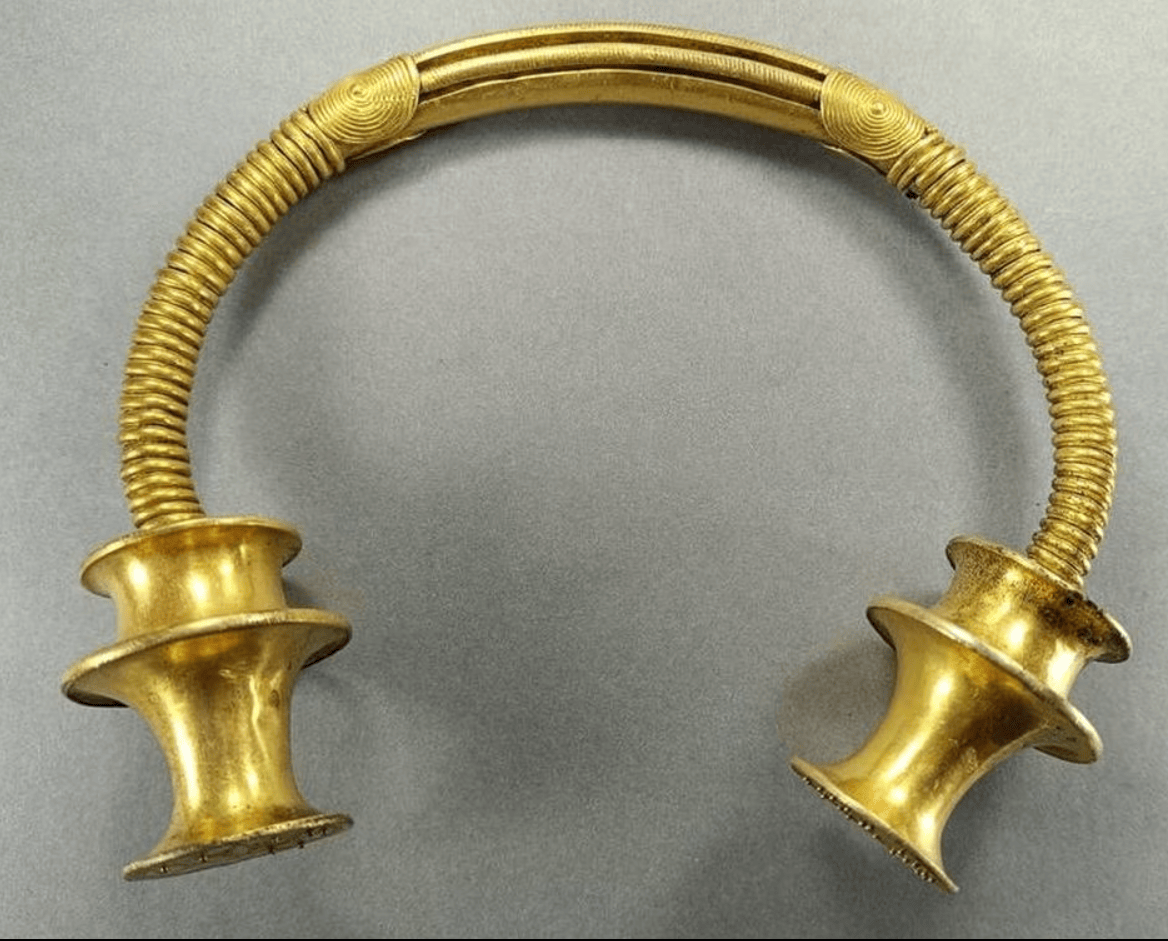Fajne beats by Dr. dre 👌 😀
Waterworks worker discovers beautiful golden neckpieces from the Iron Age
Categories: Nálezy nejenom s detektorem v západní Evropě
In Cavandia, northwestern Spain, an inspecting waterman found gold neckpieces dating from the 5th to 2nd centuries BC. They are characterised by their high quality and variety of goldsmithing techniques and decorative motifs. It is the most important necklace find in Asturias and one of the most important discoveries of Iron Age Spain.
On August 29, Sergio Narciandi was inspecting a pipe running through a steep hillside when he saw a shiny object among the stones on the hillside by the road. At first he thought it was a piece of metal from a goat farm or other agricultural facility in the area, but the high shine of the metal made him turn back. On closer inspection, he realized that it was gold and probably a very old archaeological find.
Narciandi first contacted the local authorities and then called his uncle, an archaeologist, who put him in touch with the director of the Asturian Archaeological Museum. Experts arrived at the site the same afternoon. They confirmed the discovery of the gold necklace and subsequently discovered six more fragments, which formed a second complete necklace on a slope near the first. Both necklaces were taken to the museum laboratory for examination and conservation.
Necklaces of this type have been associated with the highest strata of society. Their craftsmanship, especially that of the first jewel, represents the high art of Iron Age goldsmithing. In addition, the discovery is exceptional because it is the first necklace discovered in Spain in situ and recovered by professional archaeologists.
"Most of the Iron Age neckwear discovered was unearthed in the 18th and 19th centuries, when limited archaeological methods meant that most of the information found was lost. In this case, the site is intact, giving archaeologists a much better idea of their context," explained Pablo Arias, professor of archaeology at the University of Cantabria. "We have very precise information about where they were found, which is really exceptional," the professor added.
The C-shaped neckpieces were made in the style of the Celtic tribes inhabiting what is now Asturias and Galicia. The first consists of a central massive bar wrapped with spiral wire, decorated with two spiral discs and topped with two distinctive ornamental decorations. The second neckcloth has a rectangular central section with engraved sun designs on the faces of the distinctive finials. Both bear signs of wear at the points of contact with the neck; they have therefore been in active use for some time.
"All the ancient techniques used by a goldsmith of extraordinary skill are concentrated in both artefacts: Casting, filigree, gritting and welding, combined with aesthetic and geometric motifs and styles, which we now allows us to delve into aspects such as the dispersion found in other pieces for which we were unsure of their true origin," added Pablo Arias.
The regional government, together with archaeologists in Asturias, praised Marciandi for his exemplary approach. Both neckpieces are now undergoing non-invasive metallurgical analysis. They will be studied by an interdisciplinary team of top experts. The results should yield new insights into the production technology of Iron Age Spain, metal extraction, the use of silver, gilding techniques, and other essential information.
Roman Nemec
Sources: arkeonews.com, cnn.com, smithmountainlake.com, elpais.com


The article is included in categories:



